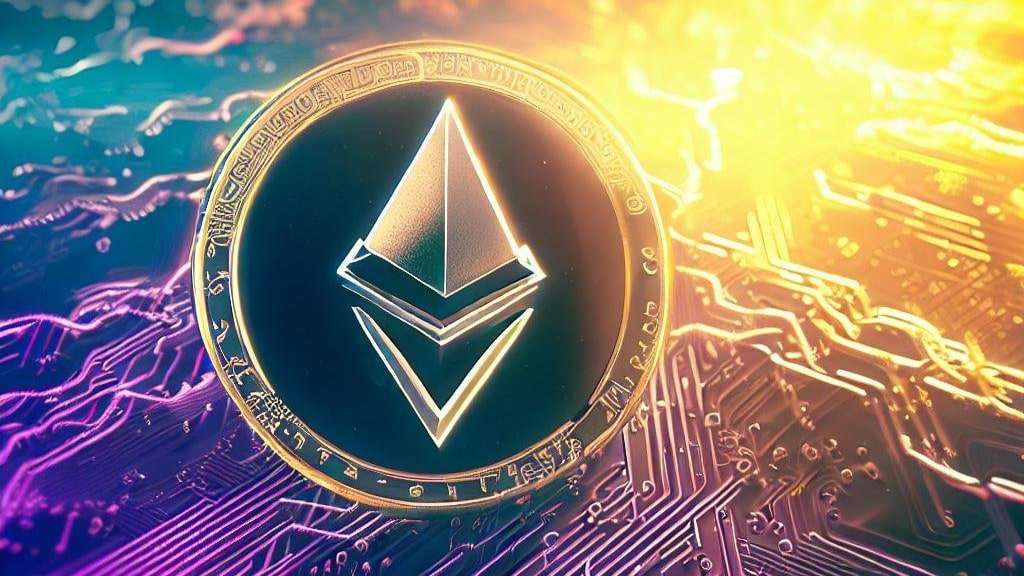
Ethereum, the second-largest cryptocurrency by market capitalization, has witnessed its fair share of pivotal moments in its journey. Among these, none stand out as prominently as the DAO fork of 2016. These forks represent critical junctures in the life of a blockchain network like Ethereum, with their outcomes shaping the direction of the entire ecosystem. Exploring how Ethereum handles contentious forks provides valuable insights not only into its governance structure but also into its core values and technical resilience.
The DAO and the 2016 Fork: A Watershed Moment
The Decentralized Autonomous Organization, or DAO, was an ambitious experiment in creating a decentralized venture capital fund on the Ethereum blockchain. Investors could purchase DAO tokens using Ether, granting them voting rights over how pooled funds would be utilized. Unfortunately, a vulnerability in the DAO’s code allowed a hacker to siphon off a staggering 3.6 million Ether, valued at approximately $70 million at the time.
This incident sparked a profound ideological debate within the Ethereum community. Should the blockchain remain immutable, even in the face of vulnerabilities that enable theft? Or should changes be made to restore the stolen funds? These questions ignited fierce debates between those advocating for the principle of immutability and those arguing for exceptions in extreme cases. Ultimately, the Ethereum community made a historic decision to implement a hard fork that invalidated the stolen Ether, effectively reversing the hack. This fork led to the emergence of two Ethereum paths – the unforked Ethereum (ETH) and the forked Ethereum (ETHF).
Soft Forks vs. Hard Forks: Key Distinctions
In the realm of blockchain, there are two primary types of forks: soft forks and hard forks. A hard fork represents a complete departure from the existing blockchain, requiring all nodes to upgrade to continue validating transactions. Conversely, soft forks are designed to be backward compatible, allowing non-upgraded nodes to continue their transaction validation activities.
Ethereum’s unique capability to deploy both soft and hard forks grants it the flexibility to implement changes while maintaining compatibility with the existing network. However, hard forks are inherently riskier and necessitate broad coordination within the community, while soft forks enable more seamless upgrades.
The Forking Process: Unveiling the Mechanism
When a fork proposal is made, client developers signal their intentions through code changes. Nodes then face a critical decision – whether to upgrade to the new client or continue running the legacy client. Once a supermajority of nodes (often around 80-95%) upgrade, the new chain is recognized as dominant.
Miners play a pivotal role during forks, directing their hashing power to either the legacy or forked chain. Without sufficient miner support, forked chains may operate at significantly reduced speeds or even come to a standstill. The distribution of hashing power is a determining factor in the success or failure of forking efforts.
Governance and Value Judgments
Ethereum’s governance structure does not rely on formal on-chain processes. Instead, it relies on off-chain coordination and signals among developers, miners, users, and other stakeholders to build rough consensus for major changes. However, no single entity possesses unilateral authority to decide the outcome of a fork. Forks are, in essence, expressions of the community’s collective values.
The DAO fork vote brought these community values to the forefront. For some, the principles of immutable code and unwavering rejection of censorship were sacrosanct. For others, the imperative to protect users from vulnerabilities and hacks justified exceptions in extreme situations. Both of these viewpoints continue to coexist within the Ethereum community to this day.
Key Factors in Successful Forks
Several critical factors contribute to the success of forks within the Ethereum ecosystem:
Ethereum’s Unique Governance Model
Ethereum’s ability to recover from exploits like the DAO hack underscores the flexibility and adaptability of its governance model. The informal coordination that occurred allowed the community to collectively determine that, in this particular instance, breaking the immutability of the chain was a necessary step. This demonstrates that Ethereum’s governance prioritizes practicality and collective wisdom over rigid adherence to principles. It functions as a dynamic political system, capable of adapting to emerging challenges through open debate and rough consensus. Its decentralized nature instills confidence that proposals with broad-based support tend to succeed, while fringe or contentious changes struggle to gain adoption. Ultimately, this governance model mirrors and reinforces the values of the Ethereum community itself – adaptable, transparent, and committed to technical progress.
Lessons for Other Blockchains
The debates within the Ethereum community regarding forks offer valuable lessons for other blockchain projects. While each project operates within its unique context and values, examining Ethereum’s experiences with protocol changes can provide guidance on navigating critical governance decisions. Understanding how Ethereum, the second-largest blockchain by market cap, arrived at its approach offers perspective for communities grappling with similar dilemmas.
Other blockchains must strike their own balance between stability and flexibility when designing protocols. Ethereum’s multi-year journey, which led to the development of informal governance capable of supporting both soft and hard forks, serves as one potential path. Ethereum’s experiments with on-chain signaling via gas voting provide a model for more formalized but still decentralized governance. Ultimately, each blockchain project must anchor its governance in the values and technical requirements of its own community. By studying Ethereum’s evolving model, other blockchains can blend effective practices with their own visions and principles, charting a path that suits their unique needs.


Get the latest Crypto & Blockchain News in your inbox.